HÜGELSCHÄFFER EGG
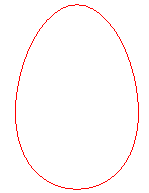
| next curve | previous curve | 2D curves | 3D curves | surfaces | fractals | polyhedra |
HÜGELSCHÄFFER EGG

| Curve studied by Fritz Hügelschäffer in 1948. |
| The Hügelschäffer egg is the Newton
transform of 2 circles with respect to the frame Oxy, O being
the centre of the first circle and the second one being centred on Ox.
When the two circles are concentric circles, we get the classic construction
of the ellipse by reduction of the
ordinates; moving one of the circles makes the ellipse no longer symmetrical
and gives, when the circle with centre O is included in the other
one, a curve shaped like an egg.
Parameters for the curve opposite: a = 6, b = 4, d = 1. |
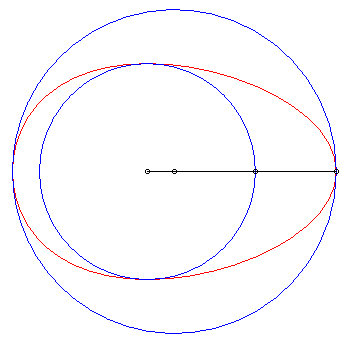 |
| Cartesian equation for a circle with centre O
and radius b and a circle with centre (d, 0) and radius a: Elliptic cubic with an oval (except special cases). Cartesian parametrization: |
| Like all cubics, the complete algebraic curve does not
only include the ovoidal shape but also has an infinite branch.
Besides, the second equation above shows that the Hügelschäffer eggs are in fact equivalent to cubic hyperbolas with equation |
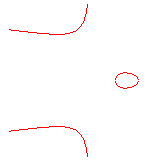 |
| The other Newton transform (obtained by swapping the
axes) also has the shape of eggs for certain values of the parameter (opposite,
in green, for a = 4, b = 6, d = 1). Strangely,
it is no longer a portion of a cubic but a half-sextic (the other half
being its symmetric image about Oy).
The green curve opposite is not the symmetric image of the red curve above! Equation of this sextic: |
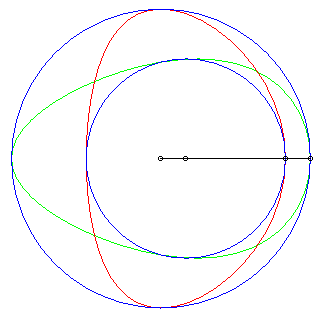 |
| When the second circle is centred on the first one (d = a), the first Newton transform is composed of a parabola and a line, and the second one is composed of a lemniscate of Gerono and a double line. | 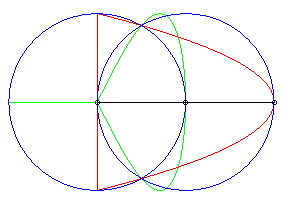 |
See also the Ehrart egg, and this index of the curves shaped like eggs.
| next curve | previous curve | 2D curves | 3D curves | surfaces | fractals | polyhedra |
© Robert FERRÉOL 2017